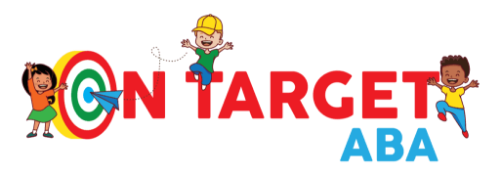🧠 AI Summary:
This article explores how Applied Behavior Analysis (ABA) therapy uses positive reinforcement to teach children meaningful skills and reduce challenging behaviors. Parents will learn how rewards — from praise to playtime — help motivate learning, strengthen confidence, and create lasting progress. The post highlights how On Target ABA applies evidence-based reinforcement techniques with compassion and creativity to help children grow, both in therapy and at home.
Introduction: Why Motivation Matters
Every child learns best when they feel motivated and supported. For children with autism, finding that motivation can be the key that unlocks progress.
At On Target ABA, we understand that positive reinforcement isn’t just about rewards — it’s about connection, encouragement, and trust. When children know that their efforts are noticed and celebrated, they’re more eager to learn, try new things, and build independence.
This is the heart of Applied Behavior Analysis (ABA) therapy — using positive reinforcement to shape meaningful behaviors and help each child reach their full potential.
What Is Positive Reinforcement in ABA?
In simple terms, positive reinforcement means adding something enjoyable or rewarding after a desired behavior to increase the chance it happens again.
For example:
- When a child says “please” and gets a smile or sticker — they learn that polite communication works.
- When they follow directions and earn playtime — they connect effort with positive outcomes.
ABA uses these small, consistent reinforcements to help children learn complex life skills, from communication and social interaction to emotional regulation.
The Science Behind Reinforcement
Positive reinforcement is rooted in behavioral science — the understanding that all behavior has consequences that either strengthen or weaken it.
Psychologist B.F. Skinner, who pioneered behavior analysis, found that when a behavior is followed by something rewarding, it’s more likely to be repeated.
In ABA therapy, this principle helps therapists:
- Identify what motivates each child
- Reward positive behaviors consistently
- Gradually replace challenging behaviors with functional ones
At On Target ABA, reinforcement isn’t about control — it’s about empowering children through encouragement and success.
Types of Reinforcement in ABA Therapy
Every child is unique, and so are the things that motivate them. ABA therapists use a variety of reinforcement types depending on each child’s preferences and goals.
1.Social Reinforcement
Simple but powerful — smiles, high-fives, clapping, or verbal praise (“Great job!”). Social connection builds self-esteem and confidence.
2.Tangible Reinforcement
Tokens, stickers, small toys, or favorite items — great for visual learners or early learners building motivation.
3.Activity Reinforcement
Letting a child earn access to something fun — like playing with bubbles, going outside, or choosing a song.
4.Sensory Reinforcement
Using preferred sensory experiences, such as swinging, tactile play, or lights, to reward success.
5.Token Economies
Children earn tokens or points for positive behavior and exchange them later for bigger rewards — teaching delayed gratification and responsibility.
💙 Pro Tip: The best reinforcement is one that’s meaningful to the child. What works for one might not work for another, which is why ABA is always individualized.
Natural vs. Structured Reinforcement
Therapists at On Target ABA balance two reinforcement styles to create real-world learning:
- Structured Reinforcement: Planned and delivered during teaching trials (e.g., verbal praise after each correct response).
- Natural Reinforcement: Embedded into everyday play and routines — like getting to play with a ball after asking for it.
Over time, structured reinforcement fades, and natural reinforcement takes over — just like in real life.
Reinforcement in Action: Real ABA Examples
Let’s see how reinforcement shapes growth across different skills:
🗣️ Communication Skills
A child says “juice” for the first time → therapist immediately gives juice → child learns words get results.
🧩 Social Skills
Two peers take turns in a game → therapist praises and celebrates → both kids enjoy sharing time together.
🧼 Daily Living Skills
A child puts away their toys → therapist smiles and gives a sticker → child is motivated to tidy up next time.
🌟 Emotional Regulation
When a child asks for a break instead of having a meltdown → therapist praises calm communication → reinforces emotional control.
Small wins like these add up — each one a step toward independence and confidence.
Why Positive Reinforcement Works
- Builds Confidence: Success breeds motivation.
- Reduces Problem Behaviors: Children learn better alternatives.
- Creates Emotional Safety: Kids know what earns praise and connection.
- Encourages Consistency: Reinforcement teaches routines that stick.
- Strengthens Parent-Child Relationships: Shared celebrations build trust.
Positive reinforcement transforms therapy from correction to collaboration.
The Parent’s Role in Reinforcement
The most powerful reinforcers often come from home. Parents can continue therapy gains by using the same ABA principles in daily life.
Try These at Home:
- Notice good behavior often. Say, “I love how you waited patiently!”
- Use visuals or token charts. Simple and effective motivators.
- Give specific praise. Instead of “Good job,” say “Great listening!”
- Pair praise with play. A hug, high-five, or shared laugh boosts motivation.
- Be consistent. Reinforce every success, big or small.
💙 When home and therapy align, reinforcement becomes second nature — not just a technique, but a way of life.
Gradually Fading Reinforcement
As children grow, therapists fade tangible rewards and shift toward natural reinforcement — like social praise or pride in accomplishment.
This gradual change helps children internalize motivation, so their progress continues even without external rewards.
At On Target ABA, our goal is always long-term independence — building skills that last beyond the therapy room.
The On Target ABA Approach
At On Target ABA, we believe positive reinforcement is more than a therapy tool — it’s a philosophy.
Our centers across Ohio and Utah use reinforcement to:
- Encourage confidence and engagement
- Teach replacement behaviors compassionately
- Help children generalize skills across environments
- Celebrate every milestone — no matter how small
From our Autism Scholarship Program (ASP) classrooms to our center-based therapy sessions, we create environments where effort is noticed, persistence is rewarded, and progress is constant.
Conclusion: Celebrating Effort, Not Just Outcomes
Positive reinforcement is the heartbeat of ABA therapy — transforming effort into achievement and challenges into victories.
When children are encouraged instead of corrected, they learn to try again, explore, and grow.
At On Target ABA, we celebrate every success — whether it’s a first word, a new skill, or a calm moment of self-control. Because every child deserves to feel proud of what they can do. 💙

